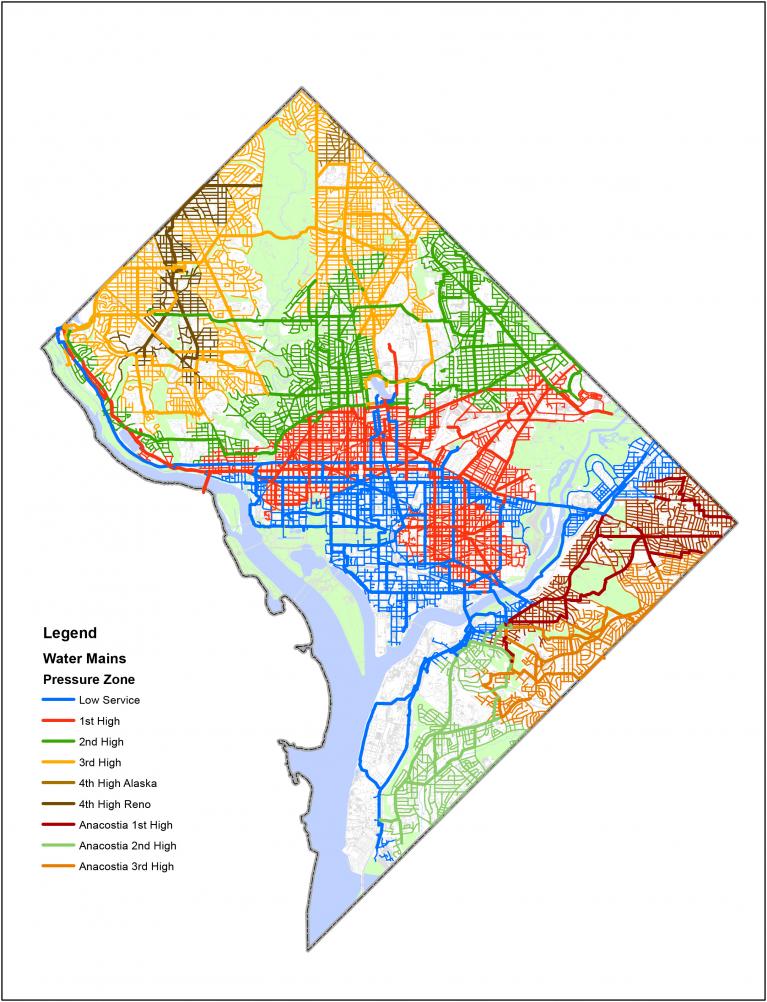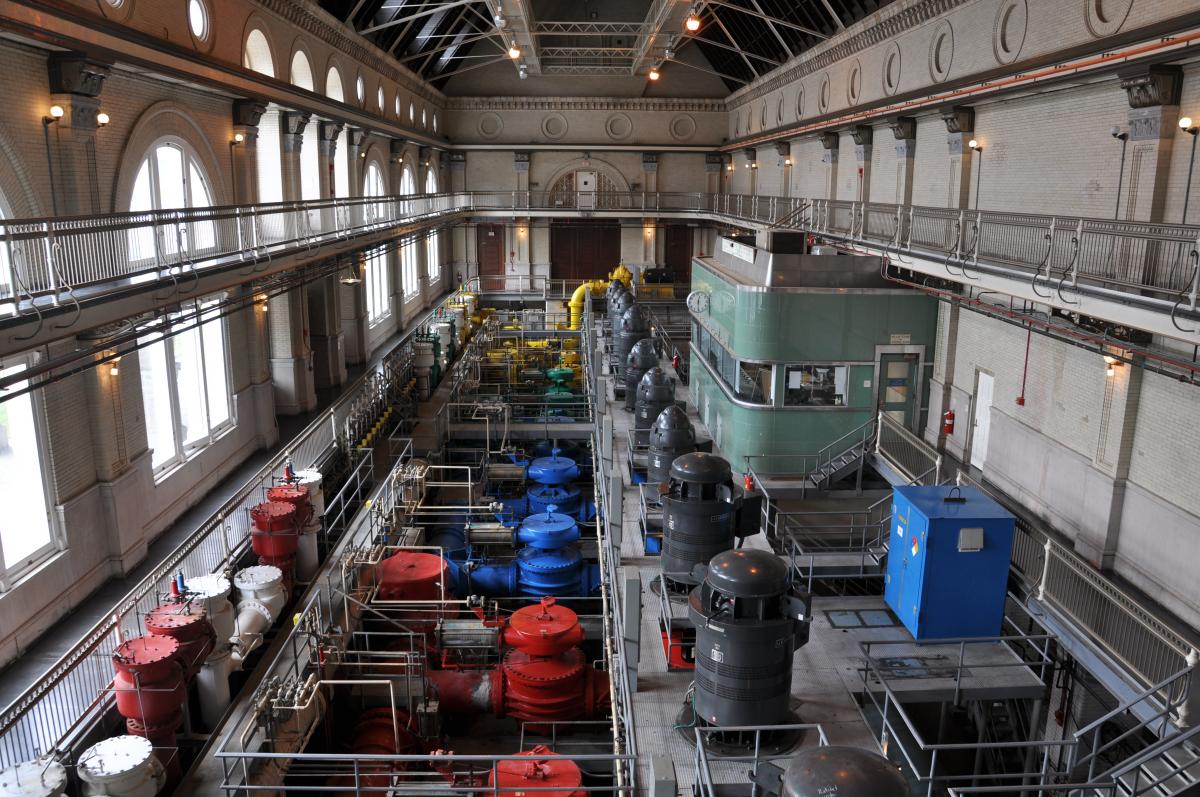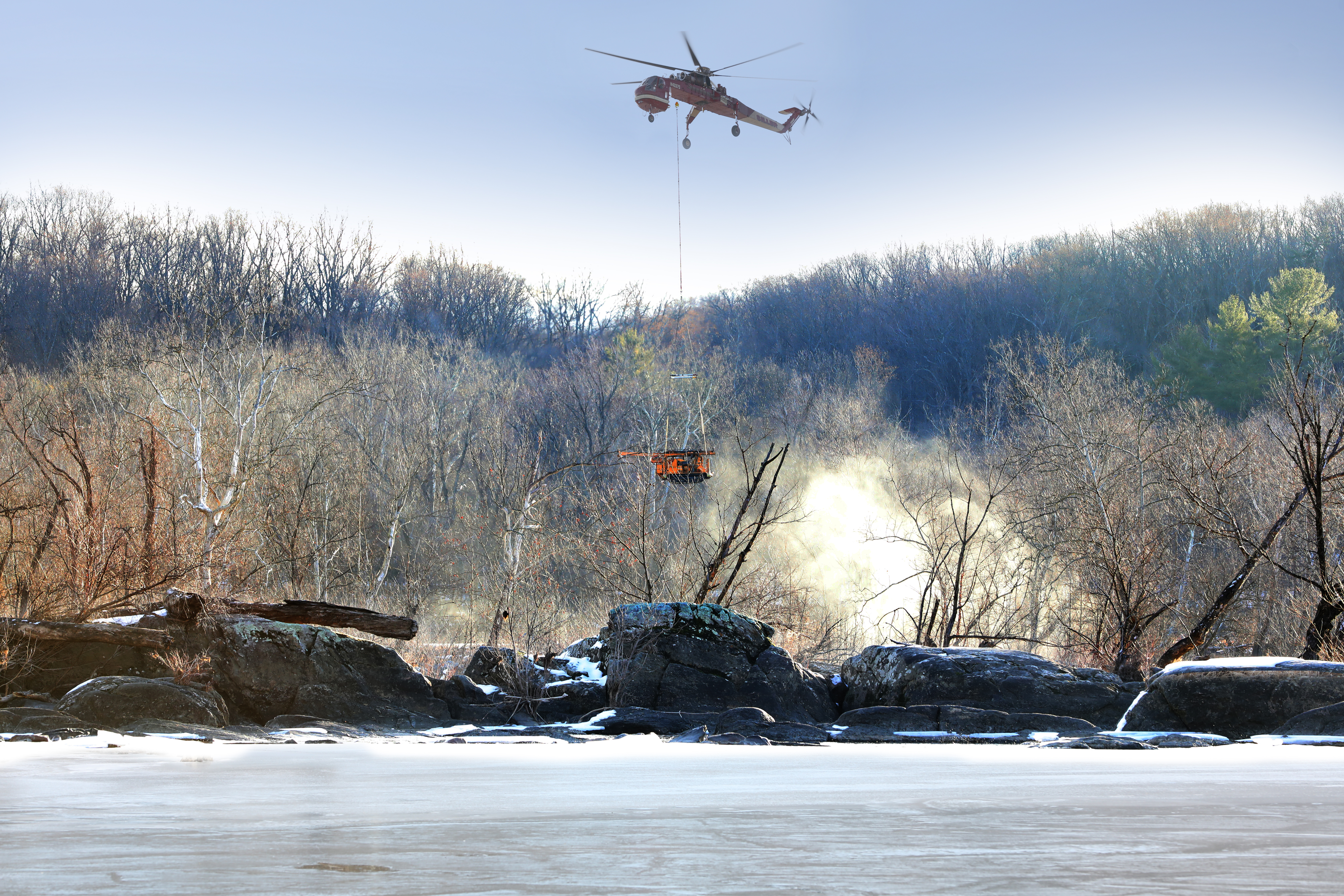Drinking Water is Distributed by Elevation Levels

The water in the distribution system is pumped from two treatment plants to customers in elevations ranging from 0 to 410 feet. Based on this range of elevation, we created 9 distinct service zones to deliver water most efficiently throughout the District. DC Water is committed to maintain system pressures to ensure the network water pressure does not drop below the EPA standard of 20 pounds per square inch (psi) during normal operations, including fire flow.
Low Service Area
The Low Service Area includes the area around the federal buildings, along the Anacostia River, and located between ground elevations 0 to 70 feet. The Low Service Area is supplied from the Washington Aqueduct's Dalecarlia Pumping Station and DC Water's Bryant Street Pumping Station. Treated water storage in the Low Service Area is provided by DC Water's Brentwood Reservoir (25 mg at overflow elevation 172 feet). To view a map of service area click dcwater.com/low-service.
First High Service Area
The First High Service Area generally serves the area west of the Anacostia River with ground elevations between 70 and 140 feet. The First High Service Area is supplied from the Washington Aqueduct's Dalecarlia Pumping Station and DC Water's Bryant Street Pumping Station. Treated water storage in the First High Service Area is provided by the Washington Aqueduct's Foxhall Reservoir (20 mg at overflow elevation 250 feet) and DC Water's Soldiers Home Reservoir (15 mg at overflow elevation 250 feet).To view a map of service area click dcwater.com/first-high
Second High Service Area
The Second High Service Area generally includes the area west of the Anacostia River, between Rock Creek Park and Eastern Avenue, and having ground elevations between 140 and 210 feet. The Second High Service Area is supplied from the Washington Aqueduct's Dalecarlia Pumping Station and DC Water's Bryant Street Pumping Station. Treated water storage in the Second High Service Area is provided by the Washington Aqueduct's Van Ness Reservoir (14.6 mg at overflow elevation 335 feet). To view a map of service area click dcwater.com/second-high
Third High Service Area
The Third High Service Area generally includes the area west of the Anacostia River, separated by Rock Creek Park, bounded by Eastern and Western Avenues, and having ground elevations between 210 and 350 feet. The Third High Service Area is supplied from the Washington Aqueduct's Dalecarlia Pumping Station and DC Water's Bryant Street Pumping Station. Treated water storage in the Third High Service Area consists of DC Water's Fort Reno Reservoir No. 1 (5.4 mg at overflow elevation 424 feet) and the Washington Aqueduct's Fort Reno Reservoir No. 2 (20 mg at overflow elevation 424 feet). To view a map of service area click dcwater.com/third-high.
Fourth High Service Area
The Fourth High Service Area generally includes the area west of the Anacostia River, separated by Rock Creek Park, bounded by Eastern and Western Avenues, and having ground elevations above 350 feet. The Fourth High Service Area is supplied from DC Water's Fort Reno Pumping Station (western portion) and the 16th & Alaska Pumping Station (eastern portion). Treated water storage in the western portion of the Fourth High Service Area is provided by DC Water's Fort Reno Elevated Tank No. 2 (0.16 mg at overflow elevation 485 feet).To view a maps of service areas click dcwater.com/fourth-high-reno or dcwater.com/fourth-high-alaska.
Anacostia First and Second High Service Areas
The Anacostia First High Service Area generally includes the area located southeast of the Anacostia River, and located between ground elevations between 70 and 170 feet. The Anacostia First High Service Area is supplied from DC Water's Anacostia Pumping Station which draws water from the Low Service Area. Treated water storage in the Anacostia First High Service Area is provided by DC Water's Fort Stanton Reservoir No. 1 (3 mg at overflow elevation 258 feet) and Fort Stanton Reservoir No. 2 (10 mg at overflow elevation 258 feet). To view a map of the service area click dcwater.com/ana-first.
The Anacostia Second High Service Area includes the area located southeast of the Anacostia River along Southern Avenue, and located at ground elevations above 170 feet. The Anacostia Second High Service Area is supplied from DC Water's Anacostia Pumping Station which draws water from the Low Service Area. Treated water storage in the Anacostia Second High Service Area is provided by DC Water's Good Hope Road Elevated Tank (0.5 mg at overflow elevation 382 feet) and the Boulevard Elevated Tank (2 mg at overflow elevation 382 feet). To view a map of the service area click dcwater.com/ana-second.

Pumps and Valves
The water storage and pumping responsibilities are shared by DC Water and the Washington Aqueduct. DC Water operates four treated water pumping stations (Anacostia, Bryant Street, Fort Reno, and 16th & Alaska), and eight reservoirs and elevated tanks. The Washington Aqueduct operates the Dalecarlia Pump Station and three reservoirs (Foxhall, Van Ness, and Fort Reno).
The water distribution system, which is operated and maintained by DC Water, includes almost 1,300 miles of pipes and mains ranging from 4 to 78 inches in diameter. DC Water's water transmission and distribution system includes about 87% cast iron pipe, 8% ductile iron pipe, 2.5% steel pipe, and 2.5% reinforced and prestressed concrete pipe.
The distribution system includes appurtenances necessary for proper system operation, inspection, and repair, such as main line valves at regular intervals to allow flow control, air release valves to prevent air entrapment, blow-off valves for draining the pipeline, check valves to permit flow in one direction only, and closed division valves to allow transfer of water during emergency conditions from service areas with higher ground elevations to service areas with lower ground elevation. The system includes over 36,000 valves and hydrants.


